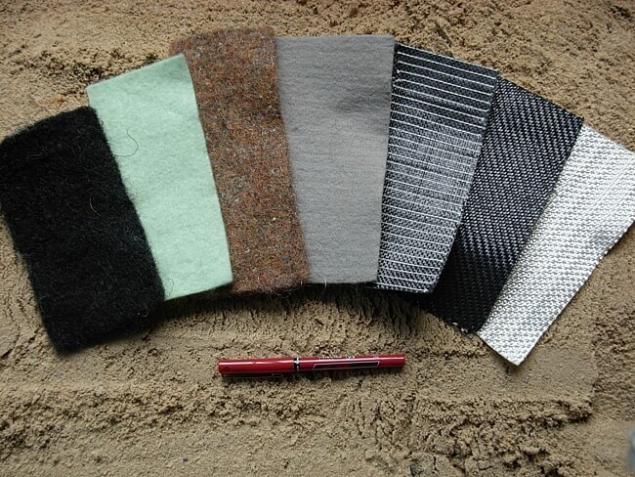Budget garden paths to high groundwater levels and clay soil
 Bashny.Net
Bashny.Net
When it comes time to Refine the plot, one of the first stands the need to create garden paths. A fairly common variant – paving slabs on gravel-sand cushion laid on the TSPS. However, if you allow the soil composition and the topography of the site, you can significantly reduce all costs.
When it comes the time of building the paths you need to follow the path of least resistance and economy

Ousley on the plot of clay soil, very high groundwater table (groundwater level) – there is 10 cm, and sometimes 0 cm, and in the winter season, some of the tiles on the tracks or platform lifts. But with the advent of warm ground thaws, and everything falls into place that year. As shown, the "floating" track, without a fixed finishing layer of cement on clay soils are more reliable and durable and the cost of tracks and platforms, are stacked so much lower than peers.

The efficiency of this method is ensured by the "sand sleeves" in the geotextile, effectively wicks away the moisture, and lawn grass sprouted between the tiles and around the edges.

With prolonged track use don't have to refurbish, they are washed by rain and after the rain literally within ten to fifteen minutes to become dry. Even when around the area there are puddles, water drains water and small natural bias is further hindered by stagnation. Large size tiles are also on hand – she's firmly on the ground and does not move.
Not all welcomed the idea of paving without the use of cement-sand mixture, sometimes it is easier not to prepare and lay the tiles directly on the ground. Say, with such a high groundwater table and so the tile will stick firmly, without additional manipulation. But such attempts do not give a positive result, clay swells unevenly, with time paths travel in different directions.
Load, say from a car, the tracks will not survive, but such a task has not been set. But the decorative, convenient, durable and long-lasting coverage with minimal cost – is obtained. And even a decade later there are no prerequisites for the emergency alteration is not observed. So why not save on cement and gravel and not be afraid that over the winter the heave will destroy the newly-laid tile, especially if the composition of the soil allows such liberties. published by P. S. And remember, only by changing their consumption — together we change the world! ©
Source: www.forumhouse.ru/articles/garden/6837
When it comes the time of building the paths you need to follow the path of least resistance and economy
- The upper fertile layer is removed at 20-25 cm.
- Placed a layer of geotextile (the sides are left wide edge).
- Poured sand cushion (20 cm), thoroughly compacted/shed/stamped.
- In order tile is laid, the author – a square, 50x50x5 cm the remaining edge of the geotextile is wrapped on a sandy base and is obtained under the tile.

Ousley on the plot of clay soil, very high groundwater table (groundwater level) – there is 10 cm, and sometimes 0 cm, and in the winter season, some of the tiles on the tracks or platform lifts. But with the advent of warm ground thaws, and everything falls into place that year. As shown, the "floating" track, without a fixed finishing layer of cement on clay soils are more reliable and durable and the cost of tracks and platforms, are stacked so much lower than peers.

The efficiency of this method is ensured by the "sand sleeves" in the geotextile, effectively wicks away the moisture, and lawn grass sprouted between the tiles and around the edges.

With prolonged track use don't have to refurbish, they are washed by rain and after the rain literally within ten to fifteen minutes to become dry. Even when around the area there are puddles, water drains water and small natural bias is further hindered by stagnation. Large size tiles are also on hand – she's firmly on the ground and does not move.
Not all welcomed the idea of paving without the use of cement-sand mixture, sometimes it is easier not to prepare and lay the tiles directly on the ground. Say, with such a high groundwater table and so the tile will stick firmly, without additional manipulation. But such attempts do not give a positive result, clay swells unevenly, with time paths travel in different directions.
Load, say from a car, the tracks will not survive, but such a task has not been set. But the decorative, convenient, durable and long-lasting coverage with minimal cost – is obtained. And even a decade later there are no prerequisites for the emergency alteration is not observed. So why not save on cement and gravel and not be afraid that over the winter the heave will destroy the newly-laid tile, especially if the composition of the soil allows such liberties. published by P. S. And remember, only by changing their consumption — together we change the world! ©
Source: www.forumhouse.ru/articles/garden/6837
Tags
See also
Ecoparking, paths, recreation areas – arrange the plot is fast, easy, affordable
Wedding flying with jet packs
How to make a garden path
How to lay paving slabs with their hands
Basement waterproofing from the inside from the groundwater
Paving: inside and out
Garden paths: how to choose the right material
11 great ideas for garden paths
Methods of waterproofing the floor svomi hands
How to make a retaining wall with their hands

















